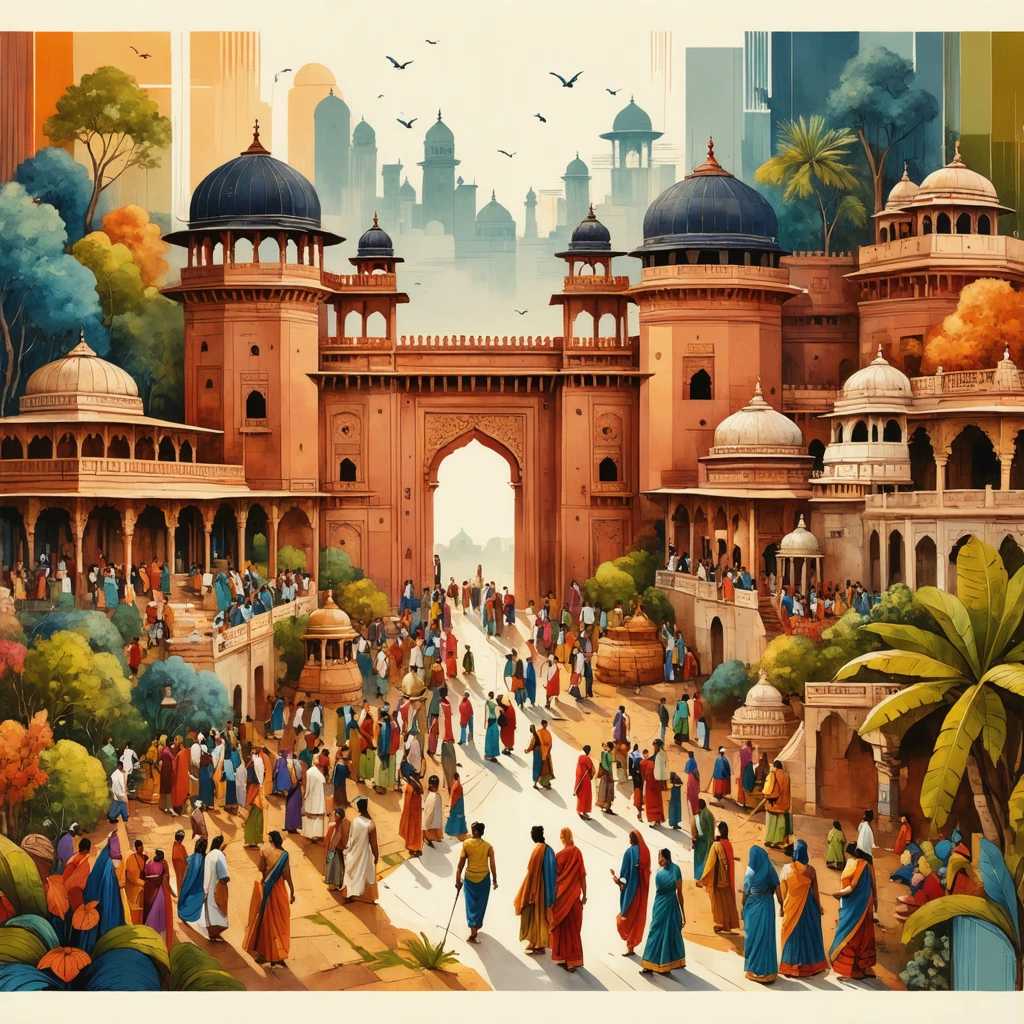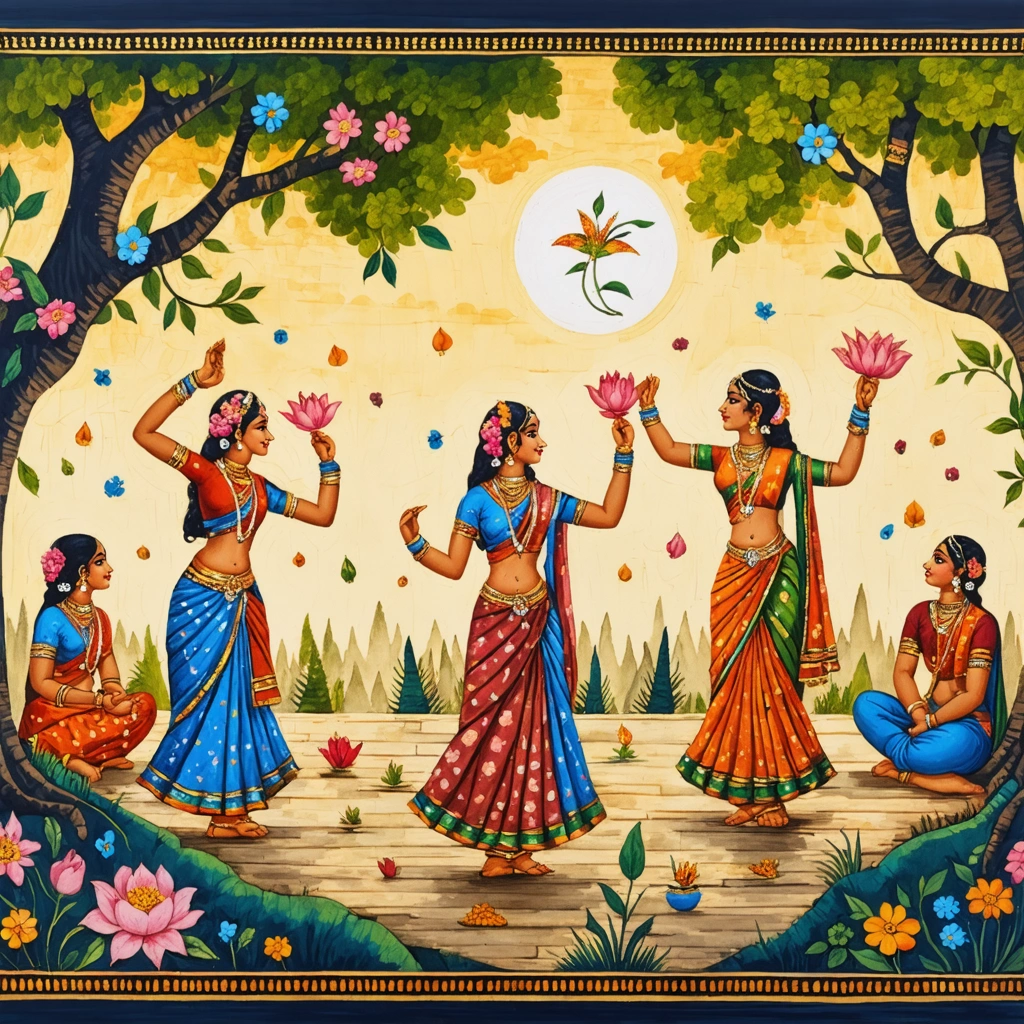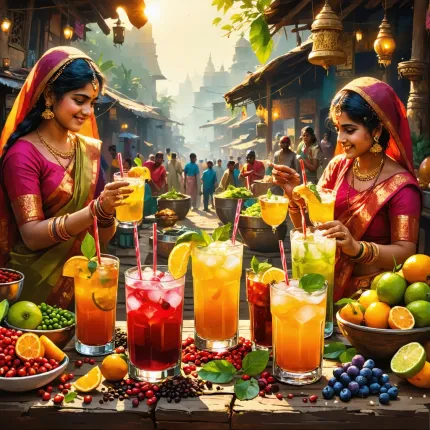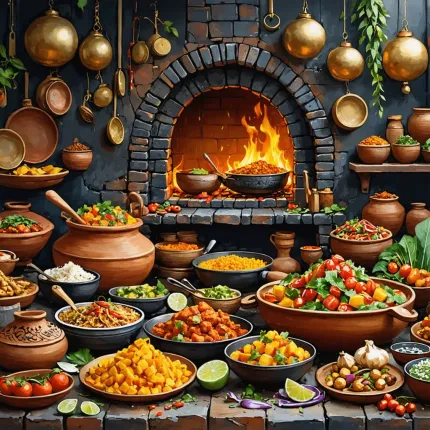
Rediscovering the Vibrant Canvas of India’s Cultural Heritage
Imagine stepping into a world where every brushstroke tells a story, every pattern whispers ancient secrets, and every color pulses with centuries of tradition. India, with its sprawling geography and kaleidoscopic diversity, is a treasure trove of such artistic marvels. Yet, in today’s fast-paced digital age, these exquisite regional art forms often fade into the background, overshadowed by global trends and mass-produced crafts. It's as if a vast, colorful mural is slowly dimming under the glare of modernity.
Have you ever wondered why the breathtaking beauty of Kalamkari textiles from Andhra Pradesh, the regal majesty of Tanjore paintings from Tamil Nadu, or the intricate Pattachitra scrolls from Odisha aren’t as celebrated as they deserve? These art forms are not just decorative; they are living embodiments of local stories, spiritual beliefs, and artistic mastery passed down through generations. But with dwindling patronage and the lure of contemporary aesthetics, many artisans struggle to keep their crafts alive.
This cultural disconnect isn’t just a loss for the artists; it’s a loss for all of us who cherish creativity and heritage. When these traditions fade, we lose a vital link to our past and the unique perspectives that enrich our understanding of the world. So, how can we, as admirers of art and culture, bridge this gap? How do we ensure that the legacy of Kalamkari, Tanjore Painting, Pattachitra, and countless other regional art forms not only survives but thrives in 2025 and beyond?
Embracing and Celebrating India’s Regional Art Forms Today
The good news is that a renaissance is underway. Across India, there is a growing movement to revive and promote regional art traditions, fueled by passionate artisans, cultural enthusiasts, and conscious consumers. This resurgence embraces innovation while honoring authenticity, weaving together the old and the new in compelling ways.
In this article, we will embark on a journey through India’s diverse artistic landscape, exploring some of the most iconic regional art forms that continue to captivate hearts in 2025. You’ll discover:
- Kalamkari: The art of storytelling through hand-painted textiles, where mythological tales and natural motifs come alive in vibrant colors and intricate patterns.
- Tanjore Painting: A regal tradition characterized by its rich gold foil work, vivid imagery, and divine themes that echo the grandeur of South Indian temples.
- Pattachitra: Exquisite scroll paintings that narrate ancient epics with fine brushwork and a palette inspired by nature, reflecting Odisha’s devotional artistry.
Beyond these, we’ll touch upon lesser-known gems and the communities that nurture them, revealing the intricate socio-cultural fabric that sustains these crafts. Whether you’re an art lover, a traveler seeking authentic experiences, or someone curious about India’s cultural wealth, this exploration promises to deepen your appreciation and perhaps inspire you to become a custodian of these artistic traditions.
So, let’s dive in—unfold the stories behind the strokes, meet the artisans who breathe life into their creations, and savor the soulful essence of India’s regional art forms as they flourish in the vibrant tapestry of 2025.

Regional Art Forms of India: Savor the Artistic Traditions of India’s Regions in 2025
What are the prominent regional art forms of India and why do they matter in 2025?
India’s vast cultural diversity is vividly reflected in its myriad regional art forms, each embodying the unique heritage, beliefs, and aesthetics of different communities. In 2025, these traditional arts are gaining renewed interest both domestically and internationally due to their cultural significance and the rising demand for authentic, handcrafted artworks in a globalized world.
Understanding these art forms is essential not only for cultural preservation but also for their economic potential in the creative and tourism sectors. They serve as living histories that connect generations and offer insight into the social and spiritual fabric of Indian society.
What is Kalamkari and how is it significant in India’s regional art landscape?
Kalamkari is an ancient textile art form predominantly practiced in Andhra Pradesh and Telangana. The word ‘Kalamkari’ literally means ‘pen work’ – artists use a pen-like tool to hand-paint or block-print natural dyes onto fabric.
This art form is notable for its intricate designs and mythological themes, often depicting stories from Hindu epics such as the Ramayana and Mahabharata. The use of natural dyes and the painstaking process of fabric preparation and coloring make Kalamkari a sustainable and eco-friendly art practice.
In 2025, Kalamkari continues to evolve with contemporary designs while retaining its traditional essence, making it popular among younger generations and designers who seek to blend heritage with modern aesthetics.
How does Tanjore Painting reflect South India’s artistic heritage?
Tanjore Painting, originating from Tamil Nadu, is renowned for its rich colors, surface richness, and compact composition. These paintings typically portray Hindu gods and goddesses, adorned with gold foil and vibrant stones, giving them a three-dimensional effect.
This art form dates back to the 16th century during the reign of the Nayakas of Thanjavur and has been preserved by families of artists who pass down their skills through generations. Its detailed craftsmanship and regal aesthetics make it a treasured collectible and a symbol of South Indian royal culture.
In 2025, Tanjore paintings are not only admired for their religious significance but also appreciated by art collectors and interior designers worldwide, fueling a niche market for authentic Indian art.
What is Pattachitra and why is it important among India’s regional arts?
Pattachitra is a traditional cloth-based scroll painting from Odisha and West Bengal. The name comes from ‘patta’ meaning cloth and ‘chitra’ meaning picture. These paintings are characterized by intricate details, mythological narratives, and vibrant colors derived from natural sources.
Artists of Pattachitra use a unique technique involving a preparation of canvas with a mixture of chalk and gum, followed by meticulous hand-painting. The themes often revolve around deities such as Jagannath, Krishna, and scenes from Hindu scriptures.
In the contemporary era, especially in 2025, Pattachitra artists are gaining recognition through government initiatives and global exhibitions, ensuring the sustainability and evolution of this exquisite art form.
How are these traditional art forms adapting to modern times and markets?
The survival and growth of regional art forms like Kalamkari, Tanjore Painting, and Pattachitra in 2025 are driven by several factors:
- Integration with contemporary design: Artists and designers collaborate to create products like home décor, fashion accessories, and lifestyle items that appeal to modern consumers.
- Digital platforms and e-commerce: Artisans are leveraging online marketplaces and social media to reach global customers, bypassing traditional middlemen and increasing profits.
- Government and NGO support: Various programs provide training, financial aid, and marketing assistance to sustain these crafts and encourage younger generations to continue the legacy.
- Eco-conscious consumer trends: Natural dyes and sustainable methods inherent in these crafts resonate with the growing demand for environmentally friendly products.
These adaptations ensure that the art forms remain relevant and economically viable, fostering cultural pride and artistic innovation.
Can you provide examples of initiatives or case studies supporting regional Indian art forms?
One notable example is the revival of Kalamkari through the efforts of organizations like the Kalamkari Revival and Conservation Trust, which works closely with artisans to preserve traditional techniques while introducing contemporary motifs.
Similarly, the Tamil Nadu government’s promotion of Tanjore paintings through exhibitions and workshops has enhanced awareness and demand, benefiting artisan communities economically.
In Odisha, the Handicrafts Development Program actively supports Pattachitra painters by providing access to raw materials, facilitating participation in national and international fairs, and promoting educational programs to train young artists.
Why should one explore India’s regional art forms in 2025?
Exploring these art forms offers a multi-dimensional experience:
- Cultural Immersion: Gain deep insight into India’s history, religion, and social values through its artistic expressions.
- Artistic Appreciation: Witness unparalleled craftsmanship and creativity that have evolved over centuries.
- Support for Artisans: Contribute to the livelihoods of skilled craftsmen and promote sustainable economic development.
- Unique Collectibles: Acquire authentic, handcrafted pieces that add cultural and aesthetic value to homes and galleries.
In 2025, as global interest in heritage and craft grows, these regional art forms stand at the crossroads of tradition and modernity, offering a rich tapestry of India’s artistic legacy to savor and celebrate.


